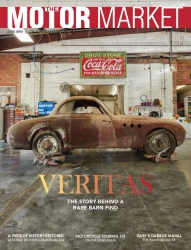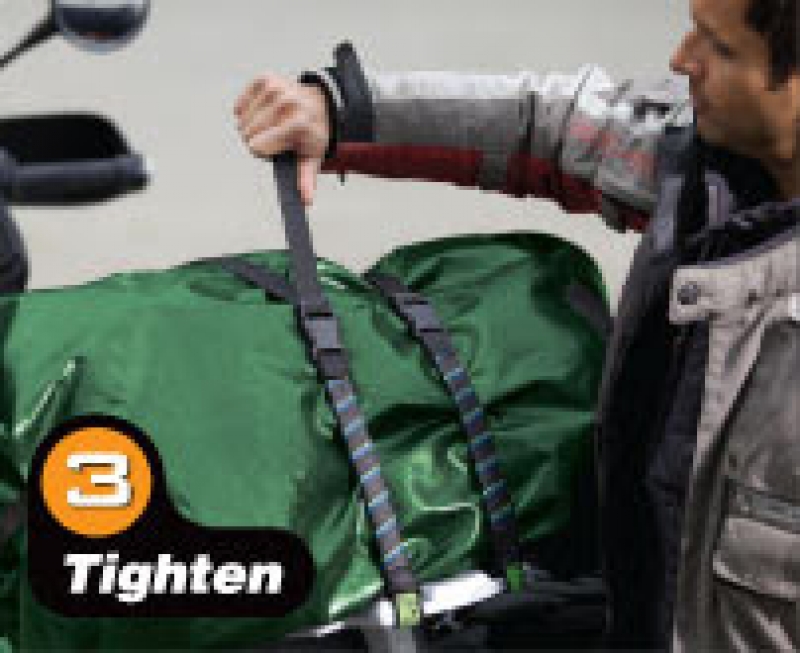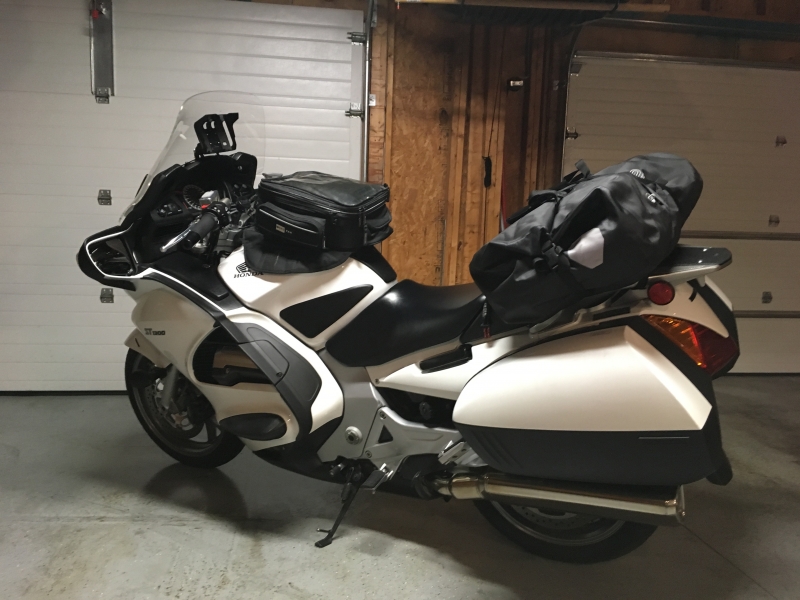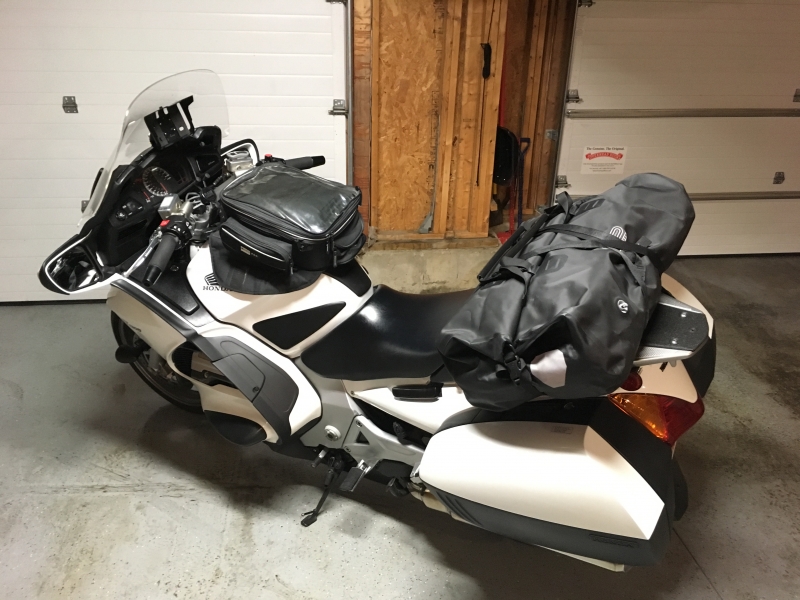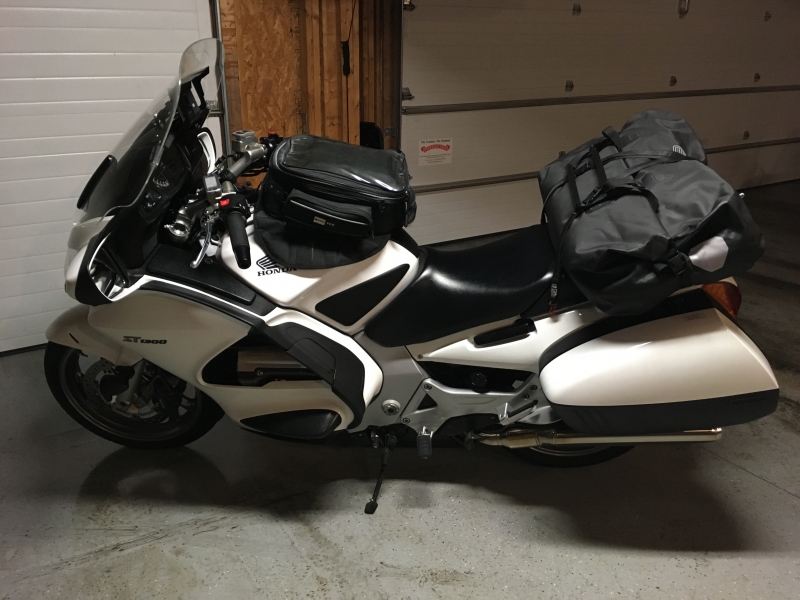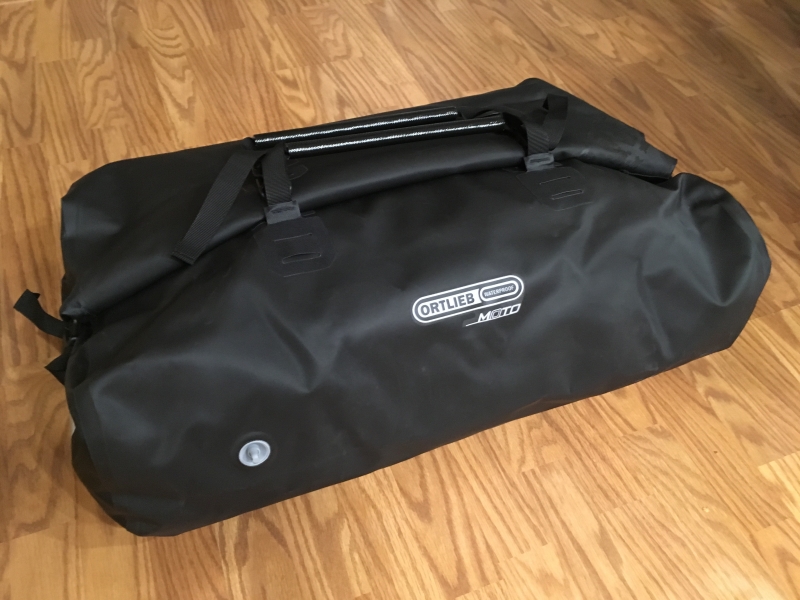More Issues
- August 2023
- September 2021
- August 2021
- July 2021
- June 2021
- May 2021
- April 2021
- March 2021
- February 2021
- January 2021
- December 2020
- November 2020
- October 2020
- September 2020
- August 2020
- July 2020
- May 2020
- April 2020
- March 2020
- February 2020
- January 2020
- December 2019
- November 2019
- October 2019
- September 2019
- August 2019
- July 2019
- June 2019
- May 2019
- April 2019
- March 2019
- February 2019
- January 2019
- December 2018
- November 2018
- October 2018
- September 2018
- August 2018
- July 2018
- June 2018
- May 2018
- March 2018
- February 2018
- January 2018
Motorcycle Touring 101
Written By: Chad Gillen
In 2003, I got back into motorcycling after a 12-year hiatus. It wasn’t until 2005 that I started touring on the motorcycle. It was a wonderful new way to enjoy the sport.
Looking back, it was good that I didn’t start right away. Those two years gave me time to take a motorcycle safety class, get rid of bad habits, develop good riding skills, and get proper gear. I prepared myself by researching motorcycle forums, magazine articles, and reading the book Motorcycle Touring by Gregory W. Frazier, which I checked out from the library. Now is the time of year when I really start planning this year’s trips and I thought I would share some of my rules that I try to follow.
Study, Study, Study
You must pick your routes and stops carefully. Thoroughly research locations and read others’ stories on their experiences if you can find them. If you know someone who has ridden there before, make sure you pick their brain because they will definitely remember their mistakes and the best choices they made along the way. Download maps into your GPS (or at least the addresses of the stops you are going to make). And lastly, check the DOT websites of the states you are going to ride to make sure you’re not going to run into road construction, especially ones with long detours or huge wait times. (Not that I’ve ever led a group down a closed road before thinking, “Ah it ain’t that far!”)
Mom & Pop Places Only
Franchise food is boring. You are supposed to be on an adventure on this ride. Going to “Apple-nanigans-garden” is not an adventure; it’s being lazy. Talk up the gas station clerk or, better yet, the local cop. They know what is good, cheap and won’t get you sick. I broke this rule once and paid for it by going to a national seafood shack place that I’ve never been to before. I paid 80 bucks for an overcooked, small-portioned, mushy meal with only water to drink! Total rip-off, no wonder the parking lot was empty. The locals know what to avoid. A great way to tour is: ride early, stop for a hot breakfast, ride, stop and eat a packed lunch, ride, eat at a local joint, and bed down for the night.
Rainproof Everything
My current, normal riding gear is rainproof. A couple of zippers and I’m not getting wet. Stopping on the side of the road or a field approach donning rain gear is not fun, and getting back onto the roadway from that now muddy field approach is not safe. Also wet/dry bags are the way to pack. Cordura nylon bags look good but the stowed rain flys are a joke. You have to be an Origami master to stow them away again. You get what you pay for in good gear. Don’t be that rider who has to cut holes in garbage bags to make an impromptu rain jacket.
No Bungee Cords
They fail! How many times have you’ve seen a bungee cord in the middle of the road? I’ve seen tons. They don’t work and they aren’t safe. Those hooks hurt when they whip back at you. When they fail while on the road, your gear will fall into the rear wheel or chain and cause a wreck. Murphy’s law says so. Use straps. There are many types out there that work well, especially ones that let you check and cinch down some more when stopping for gas or rest breaks. I highly recommend ROK straps with the pass-through loops.
Prep Your Bike
Thoroughly go over your bike as if you were a rocket scientist and the astronaut you were sending into space was your only child. Don’t assume everything is good to go; check and make sure it is fact. When servicing your motorcycle, tell the shop that you’re planning on long-distance rides. I know people that have many tire failure stories. The common denominator was that they were trying to eek out as many miles as they could before finally getting around to putting on new tires. Come on, a 1,000-mile trip on tires with 4/32-inch on them, and a squared-off rear tire?! My type of motorcycle adventure isn’t worrying about hydroplaning on a tire showing cords on the last leg home.
Compartmentalize Your Packing
Pack stuff into groups. Left-side saddlebag is for stuff I don’t want to dig out while on the shoulder of a highway. The right saddlebag is for riding gear and stuff I want to be able to get at in a hurry or change into quickly. One wet/dry bag is all camping/tent gear. One wet/dry bag is all clothing and stuff that I’ll put into the tent. You can even pack your clothes based on each day in a labeled grocery bag. This works well when changing clothes in a tent with little or no illumination.
Test Rides
If you have new gear or have never loaded your bike down before, test rides are a must; you should even consider an overnight trip to a local campground. Does your bike’s suspension need adjusting after it’s loaded with you and your gear? Did you follow the load triangle? Or are you like a newbie riding out to Sturgis stopping at the HD dealer saying, “It won’t turn; the steering is super light.” And the mechanic just looks at the bike and says, “Let’s start by taking the kitchen sink out of the sissy bar bag.”
Know When to Say When
Fatigue and complacency is what gets you hurt or killed. Stay hydrated by drinking water every time you stop. Constant wind and exhaust noise hurts your alertness so wear earplugs. Build extra days in your trip to account for hiccups along the way such as bad weather, mechanical issues, etc. Some of the best campsites, motels and eateries are found when you have to change plans and adapt. Accidents are preventable and they are caused by more than just one thing, so don’t push your luck and know when to say when.
So get out there, explore, share, and recruit more riders. Ride safe and protect yourself because I can guarantee someone is worrying about you while you’re gone.
